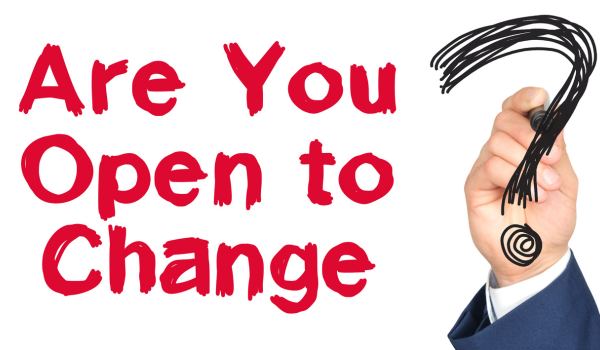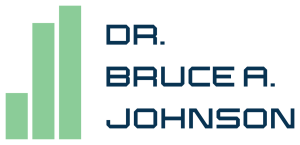Help Students Discover How Change is Part of Learning
When students begin a class, it is done so with a purpose in mind, typically to acquire specific knowledge related to their chosen program. Yet acquiring knowledge consists of processes which many adult students do not fully understand, nor is it explained when they begin a class. One of those processes involves learning how to change, and this means changing how students think and process information. This in turn can create an internal sense of conflict and confusion as students usually don’t like change, especially if it involves changing their habits of thoughts.
Students rely upon habits and patterns of thought and even habits for working to meet the requirements of each class, and the idea of having to change can create a mental roadblock or barrier to their progress. Students may also not recognize a need to make changes in how they work or perform until it has been brought to their attention by an instructor, through feedback or direct interactions in class. At that point they may or may not be willing to accept it.
Instructors expect students to perform in a uniform manner, which means they must follow academic guidelines, adhere to school policies, and complete what is expected of them within the time-frames established. As instructors know, not all students are fully prepared to engage in class in a productive manner or have all skills necessary to perform their very best. There will likely be students, especially newer students, who need to adapt in some manner, and that means making changes.
Every student will encounter a time for change, possibly with each new class, and it is up to the instructor to develop an approach to teaching that helps reduce their resistance as part of the learning process and ongoing development. While every instructor has many aspects to classroom teaching to consider, and focusing on change may not be a priority, I found there are practices which can be implemented to skillfully guide students.
Change is Part of Learning
The process of learning itself requires change, regardless of the experience level of students or the number of classes they have taken. The transition made from one class to the next requires adapting to a new instructor, new expectations, new students, and possibly new procedures. Change also occurs as part of learning, as students may need to adapt what they believe and even what they know about course subjects or topics.
When students are involved in the learning process it can easily change what they know, how they think, how they perform, and how they interact, especially within online classes. For example, students may believe they communicate effectively in a virtual environment because of involvement in social media; however, it is a different form of communication and one that is often completed in short, abbreviated sentences. The initial learning curve for development of effective online communication takes practice, especially for many new students.

Students Who Are Self-Directed
The principle of adult education that explains how adults learn is known as andragogy, and it holds that adults are independent and self-directed in their ability to be involved in the learning process. It doesn’t always mean they know what to do or what is best for them as students. For example, if I were to ask a group of students to tell me what they need to work on for their most critical developmental needs, they may or may not be able to accurately articulate what it is, unless they were to refer back to feedback received.
The next consideration is whether or not a self-directed nature helps or inhibits their ability to adapt and change when needed. What often occurs is that it can create initial resistance if students believe they know best about their ability to learn, when they read something received from their instructor. The attitude that self-directed students hold is influenced by the relationship established with their instructors, which can be productive or challenging.
Students Who Feel Intimidated by Change
When students become aware of the need to change in some manner, especially when it involves changing habits, patterns of working, and/or established routines, they can have many reactions. If they have been working in the same manner throughout their classes and received positive outcomes, they may question why they need to alter their approach now. Some students may have an emotional or reactive response, express their feelings tactfully or otherwise, or they may quietly withdraw and disengage from class, if what they need to change seems unnecessary or too difficult for them to accomplish.
At the heart of any type of change is performing in a new or different manner, which is a behavioral change, and it can be challenging, depending upon the academic skills the students possess. It may also involve making an admission that something is not being done now in the most effective manner, especially if they believe their level of involvement and the quality of their performance is acceptable. The instructor’s approach has a definite impact on how students respond when they interact with them. If the tone of the feedback or communication is stern or threatening, students will likely feel intimidated and decide not to listen.

Three Strategies to Help Students Accept Change
The strategies that follow are those which I have relied upon in my online teaching practice. Perhaps one or all of them will be helpful for you as well.
Strategy #1: Provide Ongoing Instructor Support. At the center of most change initiatives are a behavioral process which occurs through a series of progressive steps. The first step is to comprehend and understand what they are going to do, why they are going to try something different, and believe it will benefit them in some manner. To do this an instructor will be more effective if they can help relate the need to adapt to the potential for positive outcomes and improved performance.
The first attempt a student makes is usually the most important step in the process. If they experience positive outcomes, such as encouragement or new results, they will likely try it again. This process will repeat itself until a new habit has been formed. However, if they make the first attempt and experience a negative outcome, such as criticism or they discover nothing has happened that benefits them or their performance, they may stop, give up, quit, or disengage from their class.
Strategy #2: Help Students Prepare for Change. If you are going to propose students try to do something new or different, prepare them before they begin. This includes offering them resources or creating an action plan with them so they know the steps to take. This creates a roadmap that sets them up for success. You can establish checkpoints along the way as a means of providing follow-up to check on their progress, so they feel supported.
If the suggested changes you’ve made were noted in their feedback, offer to have a follow-up conversation with them to clarify the purpose and intent of your feedback. You also want to be available to answer any questions they may have as that extra effort on your part is particularly important with online classes, given they cannot see you in this virtual environment. Most of all, never give up on them, even when they want to quit. Some students need a nudge, to put in extra effort, if they are going to get past mental barriers or a lack of self-confidence.
Strategy #3: Provide Positive Feedback. An effective and engaging method of providing feedback is an approach focused on student strengths rather than deficits. One helpful method is called the sandwich approach to feedback. It begins by noting something positive, then addresses developmental issues, and concludes with another positive aspect, even if the only positive aspect of their performance you can find is the effort made. The more you encourage their effort, the better that effort is likely to become in the long run.
You can provide details to outline how you assessed their performance and a rubric to itemize how points were earned. If there are many issues to address, select the most important issues first, so they do not become overwhelmed. You want them to view the process of change as something that is done through incremental steps. Instructors often believe students don’t read and implement feedback provided, so be sure to make yours meaningful, and ask follow-up questions as a means of engaging them in the process.

The Challenge of Time
The duration of most online classes provides a limited amount of time to get to know students and work with them. This may not allow you to develop a true sense of your students’ potential, until you have interacted with them and reviewed their performance. It is unlikely you will know about prior feedback they received, or if their performance is better or worse than it recently has been, which means an assumption should never be made that students don’t know better, they aren’t trying, or they haven’t been making any improvements. This is true for any instructor, whether they teach online or in a traditional classroom.
Instead of focusing on developmental needs in a general manner, address the specifics of what you believe they need to change, and present it in a manner that causes them to want to act, while letting them know you have their best interests in mind. If you are asking students to adapt to your personal preferences, and they do not see the benefits of trying what you’ve suggested, you may find yourself at odds with them.
You will find every student has potential to try something new and make changes when needed, but it is a matter of whether they will resist or try when asked to do so. Your relationship with students, and your disposition about their development, will go a long way towards helping them adapt and discover changes that can benefit their performance. If you believe students are capable of making improvements, or adapting how they perform through change, your belief will help make the learning process transformative.
About Dr. Johnson
Dr. Bruce A. Johnson has 35 years of experience teaching and training adults. The first half of his career was spent in the field of Corporate Training and Development, with his last role as Manager of Training and Development.
Then in 2005, he made a transition into the field of distance learning. Over the past 19 years, he has been an online instructor, Faculty Development Specialist, Faculty Director, Faculty Development Manager, and Dissertation Chair.
Dr. Johnson is also an inspirational author, writer, and educator. His life mission is to teach, mentor, write, and inspire others. He has earned a PhD in Postsecondary and Adult Education, a Certificate in Training and Performance Improvement (TPI), a Master’s in Adult Education, and a Master of Business Administration (MBA).
As a scholar practitioner, Dr. J was published in a scholarly journal, and he has been a featured presenter at an international distance learning conference, along with presenting at three faculty conferences. He has also published over 230 online articles about adult learning, higher education, distance learning, online teaching, and mindset development. Dr. J published three books related to higher education, including two about online teaching.
Getting Down to Business: A Handbook for Faculty Who Teach Business.
Transform Adult Education: Expert Teaching Strategies for Educators.
Transform Online Teaching: Expert Strategies and Essential Resources Every Educator Needs.
Come join Dr. J’s group, Motivation for Transformation:
• Any time of the day, visit this group to find your source of motivation, to be inspired and more importantly, have your mindset transformed: Motivation for Transformation
Dr. J offers transformative resources:
Please visit Dr. J’s Books page on his website: Dr. J’s Books
You can also find Dr. J on the following social media sites: Instagram



